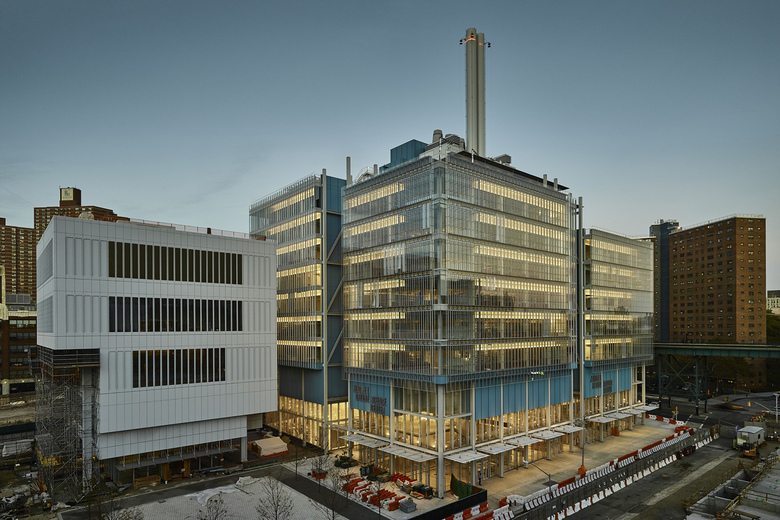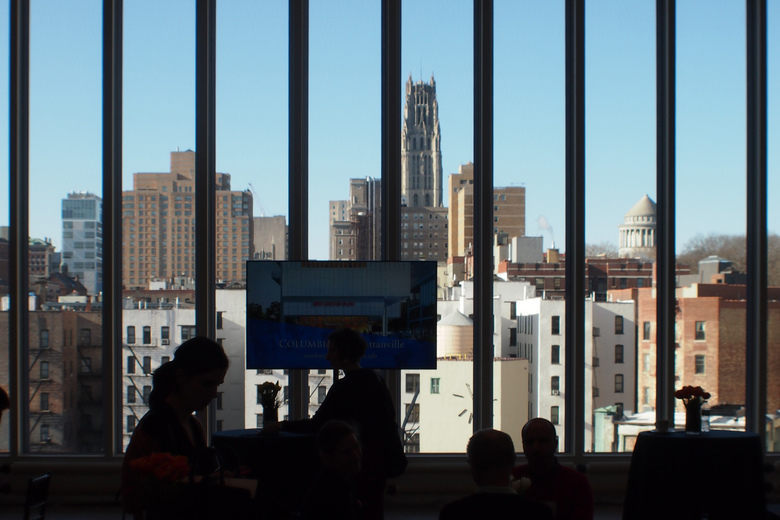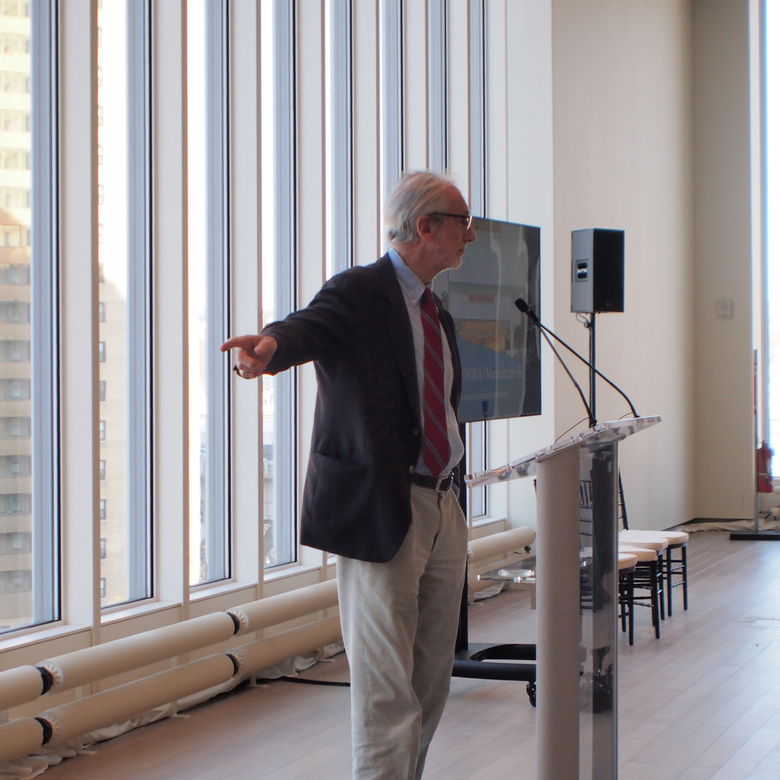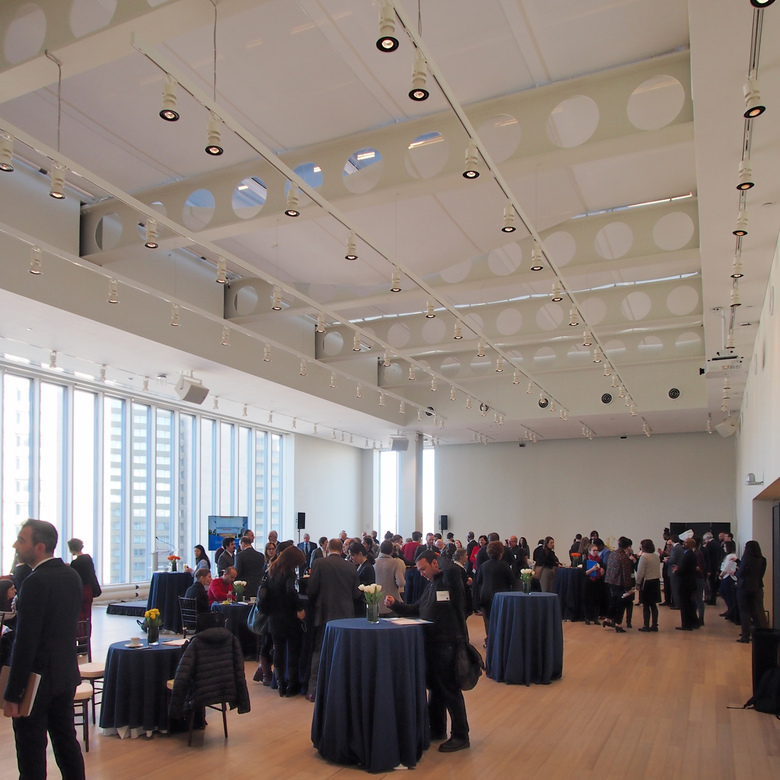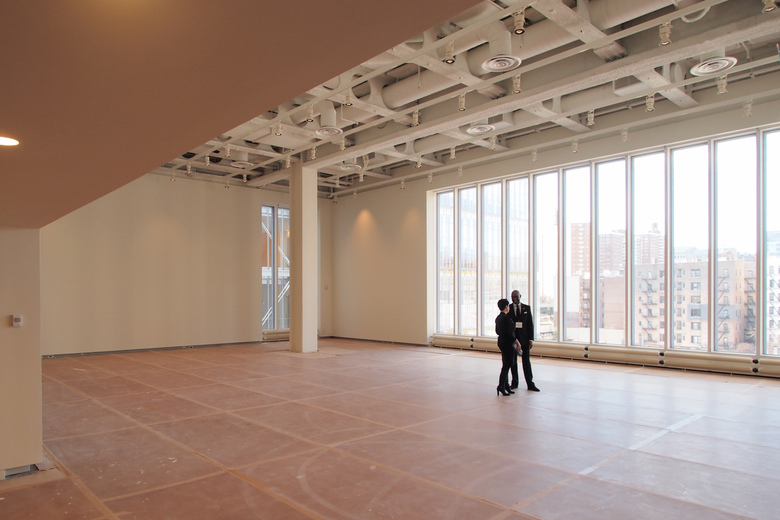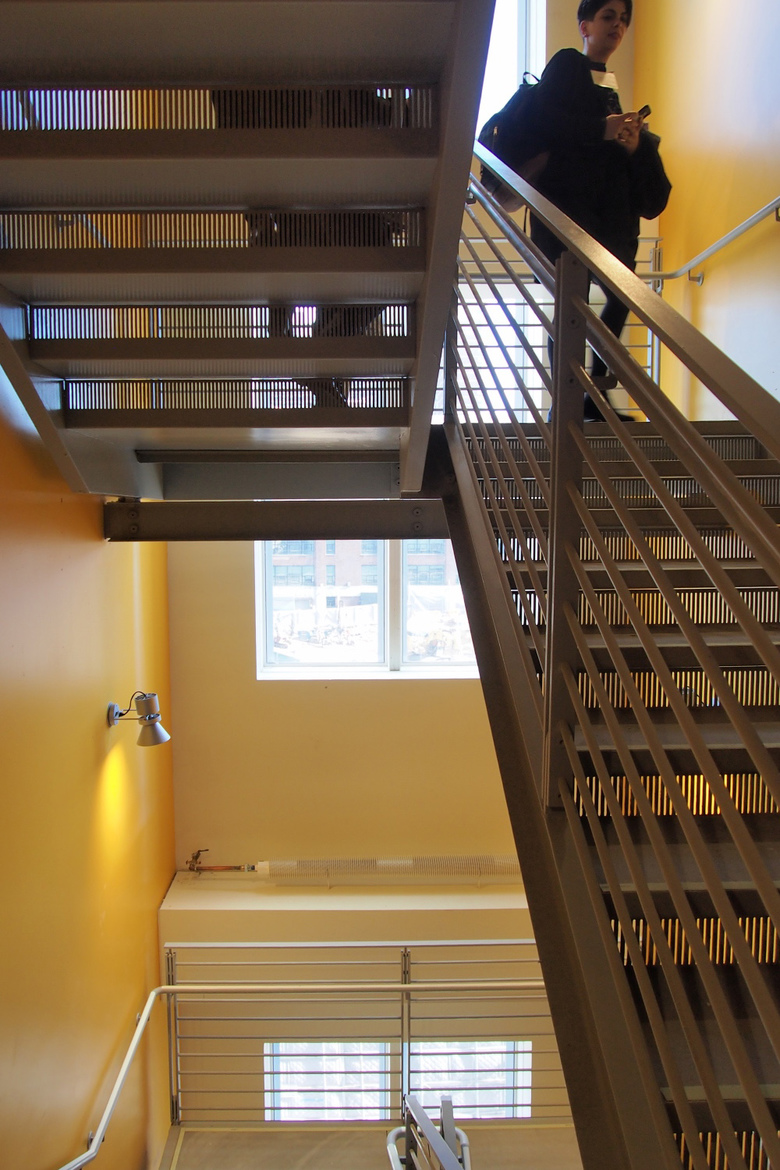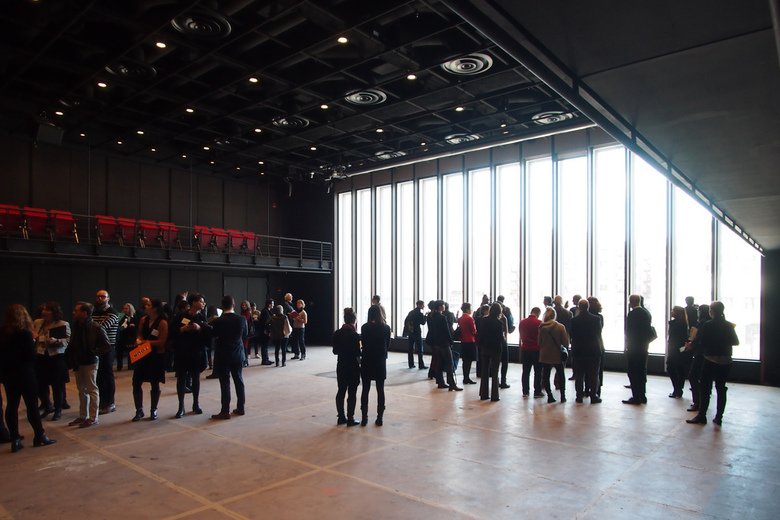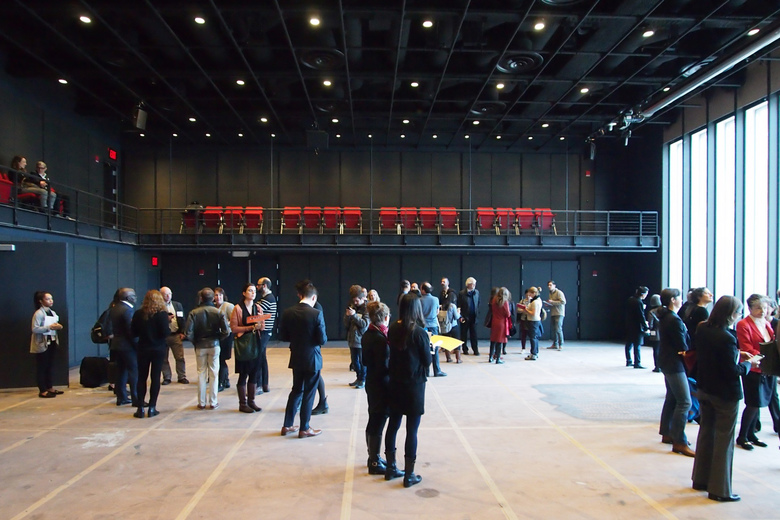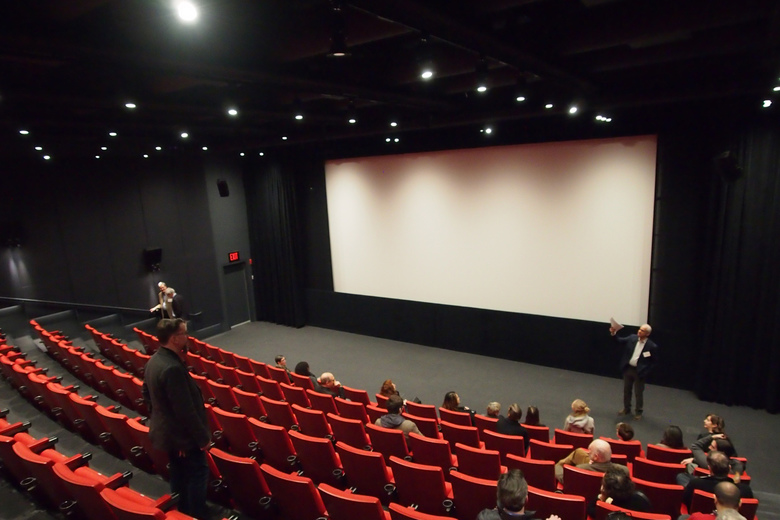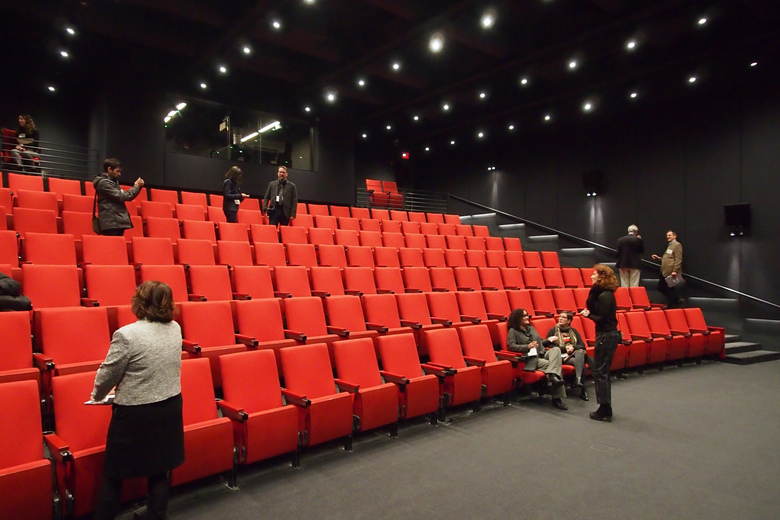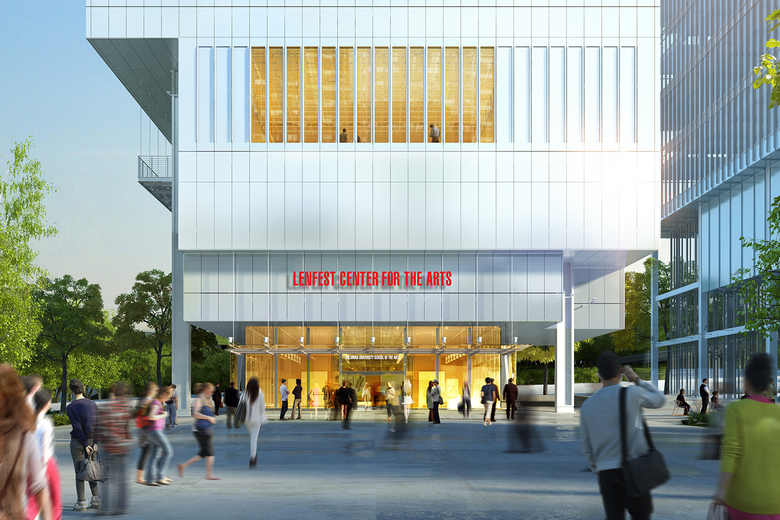Renzo Piano's Box for the Arts
Lenfest Center for the Arts (left) and Jerome L. Greene Science Center (right). (Photo: @ Columbia University/Frank Oudeman)
Yesterday Columbia University opened up the doors of the 60,000-square-foot Lenfest Center for the Arts on its new Manhattanville campus for a press preview. Designed by Renzo Piano Building Workshop, the building is set to open next month with an exhibition of student work.
Piano's firm, with executive architect Davis Brody Bond, is also responsible for the neighboring Jerome L. Greene Science Center, which we toured last fall and is also set to open in the spring. Although not physically connected, the two buildings share a south-facing plaza, visible in the photograph above.
Greene and Lenfest are the first two buildings to be completed on Columbia's ongoing 17-acre Manhattanville campus, which is located about a half-mile north of its historic Morningside Heights campus. Next year the University Forum and Academic Conference Center, also designed by RPBW, will open. Two Columbia Business School buildings designed by Diller Scofidio + Renfro buildings – the Ronald O. Perelman Center for Business Innovation and the Henry R. Kravis building – are scheduled for completion in 2021.
The Lenfest Center for the Arts is a compact, eight-story building that stacks four primary exhibition and performances spaces above its glassy lobby: an auditorium, a performance space, a gallery, and a presentation space. Following remarks on the top floor of the building, we were given a tour of the building from the top-down.
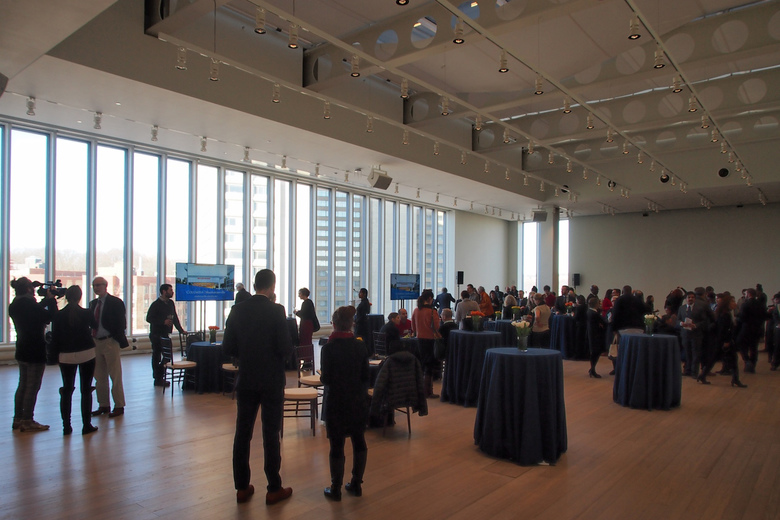

The event began on the 8th floor, what is known as The Lantern, an open presentation space that can accommodate up to 200 people. (Photo: John Hill/World-Architects)
The double-height space looks south to Columbia's Morningside campus (evident in Rafael Moneo's gray Northwest Corner Building at left) through tall panes of glass. (Photo: John Hill/World-Architects)
Renzo Piano spoke in front of the glass wall, here gesturing toward the neighboring Jerome L. Greene Science Center, which his firm also designed. (Photo: John Hill/World-Architects)
The Lantern, like the other floors, has castellated beams to allow services to run through them; here they sit below a large skylight. (Photo: John Hill/World-Architects)
The next stop on the top-down tour of the building is the Miriam and Ira D. Wallach Art Gallery on the sixth floor, also a double-height space with generous windows facing south. (Photo: John Hill/World-Architects)
Two large columns sit at the ends of the Wallach to make it a predominantly column-free space. The school will install a partition system to display such exhibitions as "Living in America: Frank Lloyd Wright, Harlem, and Modern Housing," coming in fall 2017. (Photo: John Hill/World-Architects)
Although enclosed, RPBW designed the emergency stairs as naturally lit space to encourage people to take them rather than the elevators. (Photo: John Hill/World-Architects)
The next double-height space is the flexible performance space on the fourth floor, which will be equipped with blackout shades to block natural light when required. (Photo: John Hill/World-Architects)
In addition to the balconies on three sides, the space is equipped with retractable risers for additional seating. (Photo: John Hill/World-Architects)
The lowest of the four stacked double-height spaces is the Katharina Otto-Bernstein Screening Room, which doubles the capacity of the film school's existing 75-seat auditorium. (Photo: John Hill/World-Architects)
The theater is equipped to project both advanced digital technology and traditional 35mm films. (Photo: John Hill/World-Architects)
A consistent feature among the Renzo Piano buildings on the Manhattanville campus are glass-enclosed lobbies that are visually open and open to the public. (Rendering: © RPBW and Davis Brody Bond)
